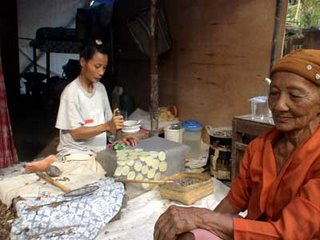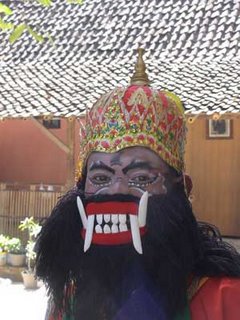 Here are the expenditures for Bebekan since the earthquake. From May 27 to June 30 2006, we have spent 49,345,800 rps, which is equivalent to approximately 4,500 euros. The expenses are ongoing, since we finance each day the meals for the group of men who take turn cleaning the village, the gasoline expenses of the art teachers and the professors of Koranic reading, the food expenses of the students manning the posko, and there are always new purchases, for example about fifty school uniforms. The big school holidays, which in Indonesia last only 15 days, have just begun. School will start again on July 17.
Here are the expenditures for Bebekan since the earthquake. From May 27 to June 30 2006, we have spent 49,345,800 rps, which is equivalent to approximately 4,500 euros. The expenses are ongoing, since we finance each day the meals for the group of men who take turn cleaning the village, the gasoline expenses of the art teachers and the professors of Koranic reading, the food expenses of the students manning the posko, and there are always new purchases, for example about fifty school uniforms. The big school holidays, which in Indonesia last only 15 days, have just begun. School will start again on July 17.
At the present time, we still have more than 7,000 euros (from donations). Part of this sum will enable us to continue without problems the various activities already set up in Bebekan : - the posko manned by the SAR students;- the playgroup;- the rubble clearing project.
In order to find ways to use the remaining money and the future donations as efficiently as possible, we have organized a small meeting at my house on Saturday July 1 with the students of the posko, then another smaller meeting in Bebekan on Sunday evening, July 2, with the established leaders [strong personalities] of the village, amongst whom were the chiefs of the two administrative districts of Bebekan (RT 1 and RT 2).
Saturday July 1
Students attending the meeting :- Faiz : « chief » of the posko- Lolo : assistant chief- Bintang : playgroup animator- Santi : playgroup animator- Sutris : art animator, theater Plus Asep (SAR coordinator), Vincent (contact specialist with international NGOs) and myself.
Faiz gave us the plan of Bebekan village which the students of the posko drew up on the spot and then transposed on their computer. This plan will be visible on the blog of Bebekan which will go online in about a week. It indicates the location of all the houses (100, before their collapse), of the cattle sheds (all intact), of the wells (57), of the WC (13), of the mosque, the cemetery at the top of the hill, the rice plantations which encircle the village (but do not belong to the villagers). Each house carries a number. This number is referenced on the two following documents, namely the photographs taken 5 days after the earthquake by two French voluntary students : each family in front their house, whether in ruins or not. It is a very moving and historically unique document. To my knowledge, no devastated village of Yogyakarta has undertaken such a documentation project of the houses and their inhabitants before the demolition of the houses and the clearing of the ruins. At the Sunday meeting, a man of Bebekan suggested that each photograph be enlarged and that each family hang "its photograph" inside the new house when rebuilt: "To tell the story of the earthquake to our grandchildren".
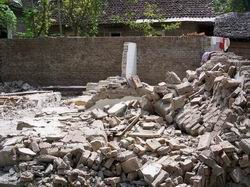 This document could have been used by the inhabitants of Bebekan to take advantage of their rights for the rebuilding premium announced by the government a few days after the earthquake (an amount from 10 to 30 million rps according to the level of destruction), but the people of Bebekan do not expect anything from this promise. They still haven't received the "survival" allowance due to any victim of the earthquake (90,000 rps and 10 kilos of rice per month) and which has already been distributed in many other districts in the last month. This premium finishes in two months. There is no justification for this delay by the local government. However the authorities of Yogyakarta have admitted that the help granted by the central government of Jakarta was not sufficient to cover all the victims. In addition, as was the case in other villages, Bebekan does not agree with the condition that this allowance only be given to the people whose houses were completely destroyed. They estimate, rightly, that even the villagers whose houses are still standing, or half-standing, have the right to receive this allowance, because they also have been very affected by the earthquake : village solidarity dictates that everyone shares all and that everyone takes part in the "gotong-royong" (collaborative voluntary help). To give to some and not to others would likely break the spirit of "gotong-royong". This refusal gives a good reason to the local government to delay the distribution of this allowance to Bebekan. On the other hand, this photographic and cartographic document ill allow us, thanks to Vincent, to obtain logistical assistance from various international NGOs : tools and equipment for rebuilding, more plastic tarps, mats, blankets, etc.
This document could have been used by the inhabitants of Bebekan to take advantage of their rights for the rebuilding premium announced by the government a few days after the earthquake (an amount from 10 to 30 million rps according to the level of destruction), but the people of Bebekan do not expect anything from this promise. They still haven't received the "survival" allowance due to any victim of the earthquake (90,000 rps and 10 kilos of rice per month) and which has already been distributed in many other districts in the last month. This premium finishes in two months. There is no justification for this delay by the local government. However the authorities of Yogyakarta have admitted that the help granted by the central government of Jakarta was not sufficient to cover all the victims. In addition, as was the case in other villages, Bebekan does not agree with the condition that this allowance only be given to the people whose houses were completely destroyed. They estimate, rightly, that even the villagers whose houses are still standing, or half-standing, have the right to receive this allowance, because they also have been very affected by the earthquake : village solidarity dictates that everyone shares all and that everyone takes part in the "gotong-royong" (collaborative voluntary help). To give to some and not to others would likely break the spirit of "gotong-royong". This refusal gives a good reason to the local government to delay the distribution of this allowance to Bebekan. On the other hand, this photographic and cartographic document ill allow us, thanks to Vincent, to obtain logistical assistance from various international NGOs : tools and equipment for rebuilding, more plastic tarps, mats, blankets, etc.
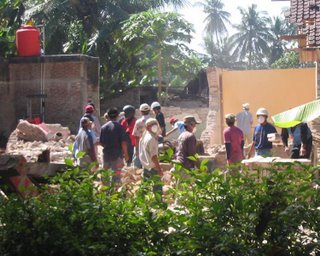
The rubble clearing is going on well because of the fairness at the heart of the "gotong-royong" system. Each time the ruins of a house are cleared, the owner tries to rebuild at once a temporary house with the remainders of his old house : beams, frames, window frames, doors, tiles, sheets, walls made of plywood or braided bamboo (gedek). Thus, in the last week, 5 cleverly-designed small houses have been born. But all the families of Bebekan do not have the same luck : certain houses crushed everything inside when they collapsed. The villagers estimated that a family would need on average 700,000 to 1,000,000 rps (about 80 euros, for some less, for some more) to build a temporary house using salvaged elements and bought supplements. It is not a large amount, but for 95 houses it adds up to quite a lot. Therefore Vincent and Asep will try during my absence (I must go to India on Tuesday July 4 for 15 days) to find NGOs which distribute bamboo or plywood. We will bring in an architect to check if these houses are earthquake-resistant.
We cannot for the moment think about financing the rebuilding of permanent houses in Bebekan. It is impossible to rebuild one or five of them. It is necessary to rebuild the totality of the 95 destroyed houses, otherwise it would most certainly create serious tensions between neighbors in a village which until now has been very united and egalitarian. A few Indonesian architects, friends of ours, have drawn up plans of small earthquake-resistant houses made of wood and bamboo : they measure approximately 30 square meters, and will cost between 1000 and 1500 euros per house. Consequently, with the money we currently have, we can build only collective spaces. We have dropped for now the idea of the "sanggar", an open courtyard intended to accommodate cultural activities and those of the playgroup, because 15 days ago, while discussing with the men of the village, they said they did not consider it a priority. Their main concern was clearing the ruins of their houses, a goal they were not able to achieve because they had to work in the rice fields. The idea of such a building was out of place. But maybe in a few weeks it will make sense to have such a public building.
There is another, less romantic, project than the sangar : the villagers chose the construction of six public WC : the first one will be installed on the current location of the common well at the center of the village (there is a beautiful story related to this well, which I will tell you later); the second one will be close to the mosque; and the other four at locations to be determined. These 4 WC will be built near four private wells, but they will be used by all. It is thus necessary to study the chart of the village and locate the wells so that the 6 WC are distributed at a correct distance one from the other, and at an accessible distance from the houses. These WC will be equipped with a skeptic pit and a "shower" corner (water vat). The majority of the people of Bebekan currently satisfy their needs outdoors, in the irrigation canals of the rice plantations. For the time being, we do not plan to install a water pump. The inhabitants do not have one and they all draw water by hand. A water pump is certainly an improvement but it requires electricity.
In Indonesia, electricity is much more expensive than in Europe and it is not certain that people of Bebekan have the means to pay the bill in the long-term. Thus let us stick to simple solutions. On the other hand, we will work with an architect and the people of the village to find an economic and original idea for the spatial distribution of these WC and bathroom. One proposal was to have the children and the young people (or less young people) paint the walls. Murals have been a very well developed popular art in Yogyakarta in the last 10 years, the movement was launched by a group of artists (Apotek Komik) and it was then taken up by all the population : schoolboys, the inhabitants of such and such district who paint their dreams, their sufferings, their traditions on the walls of their school, on the concrete dustbins, the pillars of motorway bridges, etc… They are a true image book of contemporary urban life in Yoygakarta. In the villages of the south, this art is not developed yet. Now is the opportunity to do so.
We are putting aside part of the money to help the women of Bebekan to set up in the near future a co-operative of "emping" and perhaps of other traditional foodstuffs like "tempeh" (cheese of fermented soya) or palm sugar. But that will take some time because the women still have a bit of difficulty to organize themselves, and the desire to create this co-operative must come from them. To stimulate the sharpest and most open-minded among them, we proposed to five of them to follow a training workshop on the animation of a playgroup, workshop led by Judicaëlle, a voluntary Frenchwoman, a brilliant and generous psychotherapist (whom I talked about in a preceding episode). This free workshop will be held every Friday afternoon, during 5 weeks, at the restaurant "Milas", managed by a German woman and a group of street children, and whose principal building was also damaged. It is located in the south of Yogyakarta City proper, but all the same it takes an hour by bus to reach it from Bebekan. So we will finance the transport of the women of Bebekan eager to follow this training which will give them the opportunity not only to gain new knowledge but also to meet very different people. An opening to the world. There is also the fact that when the female students will leave the village in a few weeks (they will have to go back to university), a few in women of Bebekan will be able to take over the playgroup.
The Reog Trance-Dance
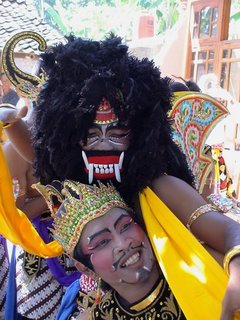
Sutris (the art and theater animator) and Asep started to ask questions to the men of the village about the origin of their dance called "reog". Originally reog came from Ponogoro, a small city in East Java. The central creature of the reog is a mask carved in the skin of the head of a tiger crowned by a peacock wheel-tail two meters high. Accompanied by the rhythms and sounds of gongs, flutes and angklung (bamboo organ), a young man dressed in black kung fu trousers lies down on his back, introduces his head into the tiger head, clamps his teeth on the huge mask to lock it up in place, and in a powerful movement of his back, he gets up, urged on by the frenzied percussions. He has now become a "barongan", the "tiger-peacock". Around him a mocking character leaps about, wearing a blood red mask whose mouth is filled with huge pointed teeth and whose forehead is covered by a mop of wild hair. He is escorted by horsemen, young men or young girls dressed as boys, riding straw horses… The reog is the history of the rebellion headed by a poet at the court of Majapahit (Hindu-Buddhist kingdom in East Java in the XVth century) against the king. It is a story set between asceticism and ecstasy. 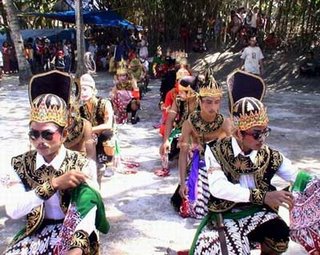 Reog was quite often banned in the past : by the Dutch colonial powers, then by the Japanese invaders, finally by the dictatorship of Soeharto which finally authorized it again by using it as a propaganda political tool, imposing a new watered-down scenario in place of the rebellion of the poet. I had gone to Ponorogo a few years ago to investigate reog when I was working on a French retelling of the great poem of Java called the Book of Centhini. I had met one of the old masters who had raised this dance to a high spiritual level. Pak Wo had explained to me that reog was a supreme challenge, that one precisely did not have to be devoured by the trance, by the apparent bestial power of the tiger mask. Through the mask "barongan", one was supposed to be released from any animality (hatred, anger, fear) and to reach the large wheel of the peacock, prism of all the colors of the universe, mirror of all the divine qualities. "Who plays at being an angel becomes an animal", states a French proverb. As for the dancers of reog, they play at being an animal for one day in order to become, God willing, an angel.
Reog was quite often banned in the past : by the Dutch colonial powers, then by the Japanese invaders, finally by the dictatorship of Soeharto which finally authorized it again by using it as a propaganda political tool, imposing a new watered-down scenario in place of the rebellion of the poet. I had gone to Ponorogo a few years ago to investigate reog when I was working on a French retelling of the great poem of Java called the Book of Centhini. I had met one of the old masters who had raised this dance to a high spiritual level. Pak Wo had explained to me that reog was a supreme challenge, that one precisely did not have to be devoured by the trance, by the apparent bestial power of the tiger mask. Through the mask "barongan", one was supposed to be released from any animality (hatred, anger, fear) and to reach the large wheel of the peacock, prism of all the colors of the universe, mirror of all the divine qualities. "Who plays at being an angel becomes an animal", states a French proverb. As for the dancers of reog, they play at being an animal for one day in order to become, God willing, an angel. 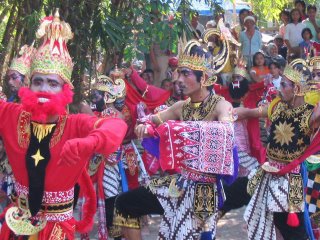 But the men of Bebekan do not dance the reog of Ponorogo. They do not have a "barongan" mask. Their costumes are those of the characters of Ramayana (Indian epic) with some added indigenous Javanese ones. Bebekan is located in the area of Mangiran, known as the area which, in the XVIth century, refused to be subjected to the kingdom of Mataram (Yogyakarta) and to its first sovereign, Senopati. The reog of Bebekan would thus be the dance of insubordination, not of East Java, but of Central Java. But the dancers of Bebekan cannot explain the meaning of their dance, they know only the form of it, and badly at that. Yet they have in themselves something of this insubordination to central rule, insubordination which explains why they did not receive any official help at the time of the earthquake, but also insubordination to the "culture of corruption" which reigns in Indonesia. They are people who do not request anything from anybody and can share equally the little they receive. On that Sunday May 28, at the moment I entered this village, I had the intuition that it was a village peopled by descendants of an "under-caste", in olden times when Java was Hinduist. We will dig with them the history of "their" reog. This should be a very exciting inquiry.
But the men of Bebekan do not dance the reog of Ponorogo. They do not have a "barongan" mask. Their costumes are those of the characters of Ramayana (Indian epic) with some added indigenous Javanese ones. Bebekan is located in the area of Mangiran, known as the area which, in the XVIth century, refused to be subjected to the kingdom of Mataram (Yogyakarta) and to its first sovereign, Senopati. The reog of Bebekan would thus be the dance of insubordination, not of East Java, but of Central Java. But the dancers of Bebekan cannot explain the meaning of their dance, they know only the form of it, and badly at that. Yet they have in themselves something of this insubordination to central rule, insubordination which explains why they did not receive any official help at the time of the earthquake, but also insubordination to the "culture of corruption" which reigns in Indonesia. They are people who do not request anything from anybody and can share equally the little they receive. On that Sunday May 28, at the moment I entered this village, I had the intuition that it was a village peopled by descendants of an "under-caste", in olden times when Java was Hinduist. We will dig with them the history of "their" reog. This should be a very exciting inquiry.
One evening in Bebekan, Asep heard from a villager the origin of the name "Bebekan". "Bebek" in Indonesian and Javanese means duck, "an" indicates a collective. It seems that there are two villages in the area bearing the name of Bebekan. Formerly, there were indeed two ducks: a female duck in "our" Bebekan, and her faithful male companion in the other Bebekan. Each evening the couple was found near a spring in the middle of the rice fields, a spring which still exists and is connected to the central well of the village. Their fidelity in love was so deep that they produced numerous and beautiful eggs. These eggs were at the disposal of the villagers for the ceremonial offerings and meals, but it was forbidden to sell them, to benefit financially from them, otherwise the miraculous egg-laying would stop.
 In another time, Sunan Kalijaga (one of the 9 mythical saints which had propagated Islam in Java, a man very attached to Javanese traditional culture) was living in Kota Gede (the old city in the south-east of Yogyakarta, also severely damaged by the earthquake). Each evening he would go with his grandson to the sacred water spring in Kota Gede. One day, the little child fell into the well and drowned without the knowledge of Sunan Kalijaga who was peacefully eating a "lele" (a fresh water fish). The mother of the child announced to Sunan Kalijaga the death of his adored grandson, Sunan Kalijaga then pronounced a mantra, the child reappeared out of the well and the fish skeleton was fleshed again and came back to life. And here is the "lele" which from the royal spring will meet the pastoral spring of the two ducks of Bebekan...
In another time, Sunan Kalijaga (one of the 9 mythical saints which had propagated Islam in Java, a man very attached to Javanese traditional culture) was living in Kota Gede (the old city in the south-east of Yogyakarta, also severely damaged by the earthquake). Each evening he would go with his grandson to the sacred water spring in Kota Gede. One day, the little child fell into the well and drowned without the knowledge of Sunan Kalijaga who was peacefully eating a "lele" (a fresh water fish). The mother of the child announced to Sunan Kalijaga the death of his adored grandson, Sunan Kalijaga then pronounced a mantra, the child reappeared out of the well and the fish skeleton was fleshed again and came back to life. And here is the "lele" which from the royal spring will meet the pastoral spring of the two ducks of Bebekan...
I have asked the two students in charge of the playgroup to use these holidays to make the children explore the name of their village. Why Bebekan ? What do they know? Let them ask questions to their parents, their grandparents, and let them make drawings of the stories which they heard. Let them slowly rebuild an "inner house" (rumah batin). Their external house of stones (rumah batu) is destroyed, but the opportunity has been given to them precisely to focus on the construction of their inner house. As solid as may be our stone-built house, if we do not have an inner house, we will remain exposed to all the winds.
Sunday July 2.
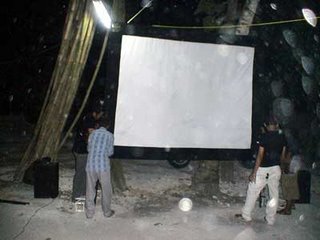 Marzuki, the friend who introduced me to Asep and SAR on the first day of the earthquake and who helps damaged villages in the area of Prambanan (east of Yogya), proposed to project in Bebekan a film on the philosophy of bamboo. He has a large screen and a very good DVD projector. We arrive with the material in Bebekan as night falls. Pak Jamhari and his wife invite us to drink tea in the temporary house they have just rebuilt. Pak Jamhari, smiling and laughing, starts to swing from a horizontal beam then shakes the wooden pillars violently to show us that this construction will resist an earthquake. At the intersection of the three roads of the village, the children have woven a long display panel, precisely in bamboo, where we have hanged the collages that Sarah (my daughter) made from the photographs taken of the excursion the children made to my house. It is there that we unfold the screen. Around it, the people of Bebekan sit down on mats.
Marzuki, the friend who introduced me to Asep and SAR on the first day of the earthquake and who helps damaged villages in the area of Prambanan (east of Yogya), proposed to project in Bebekan a film on the philosophy of bamboo. He has a large screen and a very good DVD projector. We arrive with the material in Bebekan as night falls. Pak Jamhari and his wife invite us to drink tea in the temporary house they have just rebuilt. Pak Jamhari, smiling and laughing, starts to swing from a horizontal beam then shakes the wooden pillars violently to show us that this construction will resist an earthquake. At the intersection of the three roads of the village, the children have woven a long display panel, precisely in bamboo, where we have hanged the collages that Sarah (my daughter) made from the photographs taken of the excursion the children made to my house. It is there that we unfold the screen. Around it, the people of Bebekan sit down on mats.
This film was made several years ago by an Indonesian director, Arahmaiani, based on a very simple but deep text on bamboo written by Sindhunata, a great Indonesian writer and a Jesuit priest. It is an animated feature, minimalist in style. The text is read in Javanese by the beautiful voice of a child, with subtitles in Indonesian and the music of… John Cage. The story shows how bamboo belongs to the family of the plants, of grasses even, and yet it is resistant to any challenge because he is humble by nature but strong when dealing with challenges. In one night it can grow by of one meter, it can reach a height of 30 meters, and in the darkness of the night the sound of its rustle makes us shudder with fear and shiver with delight. It knows how to serve others and thus has multiple uses : construction of bridges, weaving of baskets, very strong ropes, walls, etc. When it is young, its sprouts are also delicious to eat… When it is carved out, one can make a alarm drum with it.
Thus bamboo fills the night with sounds and yet, if we look inside, it is empty. To be at the same time full and empty, such is the central philosophy of the bamboo. The poor men and women which we are (this film was aimed at Indonesian peasants) must resemble this bamboo: weak as a blade of grass, but resistant to the challenges of life and devoted to serve others. A grandmother living on the Merapi volcano says that humans must plant bamboos while they are alive, because on the day of their death, it is on an yoke of bamboo that one is carried to the grave. The philosophy of the bamboo is therefore that of memory : to remember oneself, to remember one's fellow humans, to remember death, to remember God.
Since it is a short film, we showed it three times, and then we showed a full-length fiction film of the very talented Indonesian script writer, Garin Nugroho, "Rindu padamu" (I am nostalgic of you). During the projection, Asep and I went up a little higher on the hill (about 20 m further) where the posko students have pitched their three igloo-tents. We have organized a small informal meeting with the two RT (district chief) of Bebekan. People with whom we are in closest contact are those in charge of the RT1. The RT2 is less organized, they did not use the gotong-royong system to clear the ruins, everyone is free to do it in whatever way they want when they have time, so we did not support them with money for the meals as we did for the RT1. As we did with the RT 1, we proposed to them to rent a small truck to help carry the rubble away, but the RT2 chief told the posko students that he preferred not to use the truck and that the rental money be given in "cash money" for the inhabitants who were clearing the ruins of their house.
I was somewhat astonished to hear this English word in the mouth of the RT2. An French NGO that I had met a week after the earthquake, had stated that it was absolutely necessary to pay the villagers in "cash money" in order to support them in their work. Asep and I were strongly opposed to this idea. To give them the means and the tools to work, yes. But not "wages", otherwise one breaks forever the spirit of the "gotong-royong". That indigenous system had proved to be very reliable since the earthquake : it made it possible to weave a huge net of protection, of assistance, of help, everywhere where governmental and foreign aid was absent, and at the same time a human tissue magnificently intertwined and full of loving. This foreign NGO, and others like it, land in this country with dogmatic concepts of a foreign origin which can destroy local cultures. It is a very serious matter. In Aceh, after the tsunami, many people were completely corrupted by these NGOs which paid them to help themselves.
Perhaps that gotong-royong culture did not exist in Aceh whose social fabric was initially destroyed by years of civil war and military oppression, and then by the tsunami which decimated families and whole villages. But in Yogyakarta the situation is completely different. We thus explained to the RT2 how the villagers here had a extraordinary chance to possess this culture of "gotong-royong", almost unique in the world, etc. The men of the RT1 also joined our argument and explained to him that money allotted to a particular task could not be transferred to another. T he RT2 finally agreed. The villagers decided that evening to go ahead with the construction of the six WC. During my absence, they will study the favorable locations, will draw up plans and an estimate with the help of our architect friends. Interestingly, they proposed to recycle certain elements of their collapsed houses in the construction of the WC, for example bricks to make small walls. We undoubtedly will build everything as new, but this proposal is still a proof of the great integrity of the people of Bebekan.
he RT2 finally agreed. The villagers decided that evening to go ahead with the construction of the six WC. During my absence, they will study the favorable locations, will draw up plans and an estimate with the help of our architect friends. Interestingly, they proposed to recycle certain elements of their collapsed houses in the construction of the WC, for example bricks to make small walls. We undoubtedly will build everything as new, but this proposal is still a proof of the great integrity of the people of Bebekan.
Thank you, to them and to you.
Elisabeth
Let us limit ourselves to a pace of progress according to our means and the daily needs as they arise on the field in Bebekan.
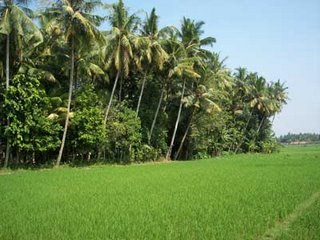
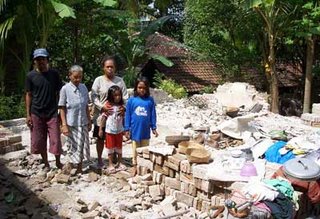 Itshouses arebuilt at the foot of a small hill in the shape of an island surroundedby an ocean of green rice fields. The village is divided in two areas(or RT) and it has a population of 400 inhabitants. All the villagersare agricultural laborers without land, except for certain workers, bothmale and female, and rickshaw drivers. There is only one civil servantin the village, namely a teacher. Out of the hundred houses which werestanding in the village before the earthquake of May 27, 2006, ninety fivehave collapsed partly or totally. Some were old, some were new, but noneof the constructions met elementary antiseismic standards. Two peopledied in the earthquake and several dozens were wounded. The three dayswhich followed the earthquake were the most trying. The promisedassistance never materialized: no food, no tents, no blankets. Whatallowed them to survive was the coconuts, bananas and other fruitsgrowing on the grounds of Bebekan, truly a blessing. The aftershocks aswell as the fear of a tsunami kept haunting the nights of the people ofBebekan. The total destruction of the electric installations as well asheavy and relentless nighttime downpours made the darkness even blacker.
Itshouses arebuilt at the foot of a small hill in the shape of an island surroundedby an ocean of green rice fields. The village is divided in two areas(or RT) and it has a population of 400 inhabitants. All the villagersare agricultural laborers without land, except for certain workers, bothmale and female, and rickshaw drivers. There is only one civil servantin the village, namely a teacher. Out of the hundred houses which werestanding in the village before the earthquake of May 27, 2006, ninety fivehave collapsed partly or totally. Some were old, some were new, but noneof the constructions met elementary antiseismic standards. Two peopledied in the earthquake and several dozens were wounded. The three dayswhich followed the earthquake were the most trying. The promisedassistance never materialized: no food, no tents, no blankets. Whatallowed them to survive was the coconuts, bananas and other fruitsgrowing on the grounds of Bebekan, truly a blessing. The aftershocks aswell as the fear of a tsunami kept haunting the nights of the people ofBebekan. The total destruction of the electric installations as well asheavy and relentless nighttime downpours made the darkness even blacker.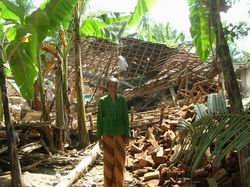
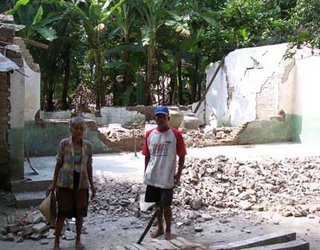
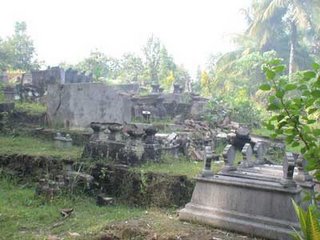
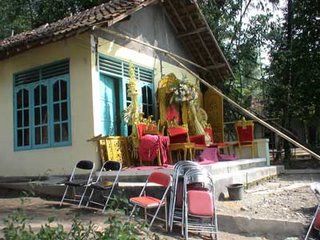
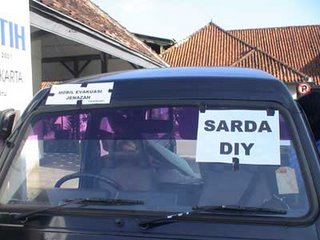
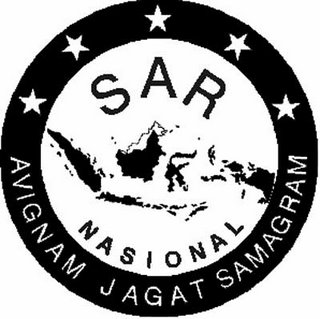
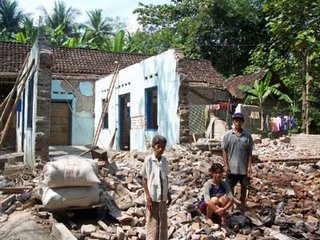
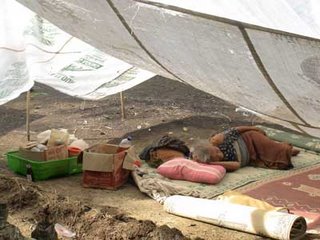
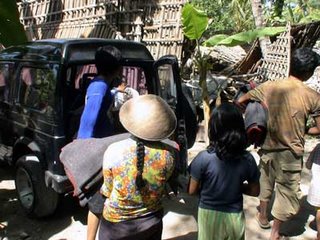
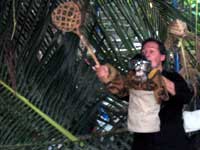


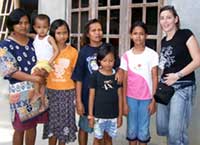
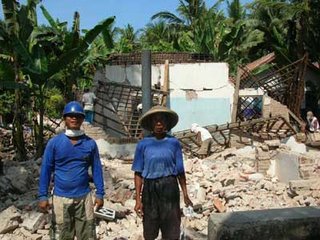
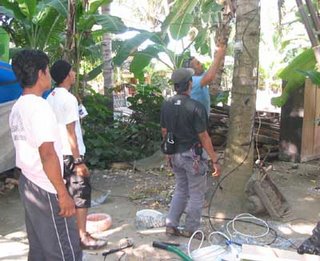
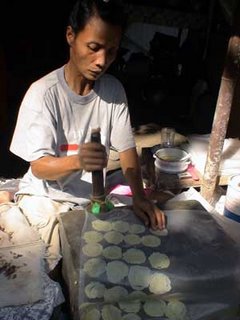
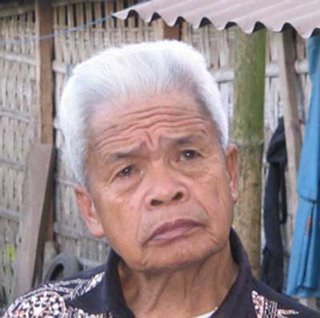
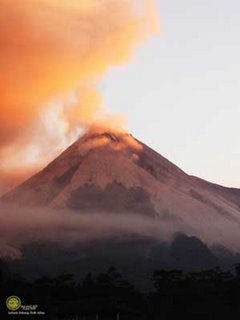
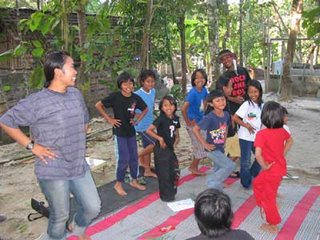
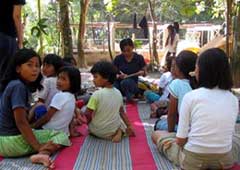
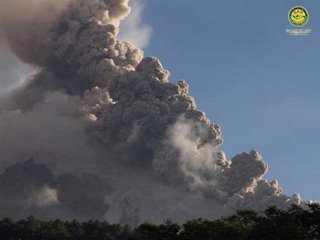
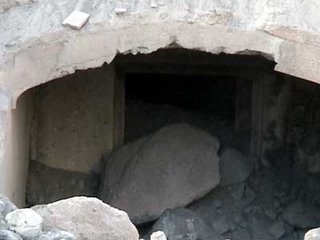
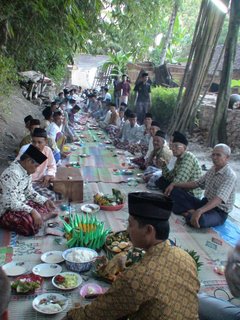

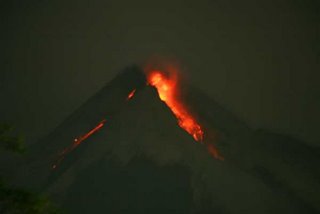
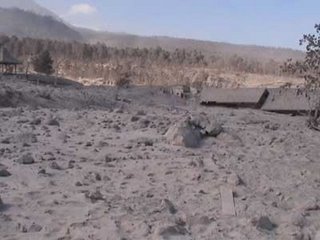

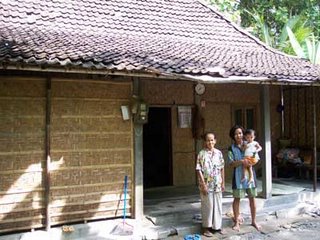
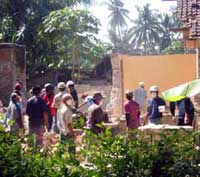

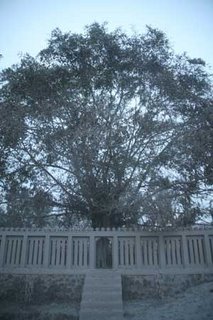

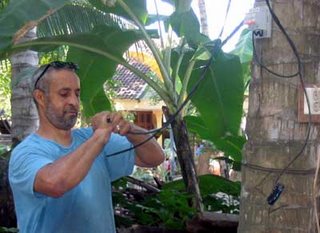
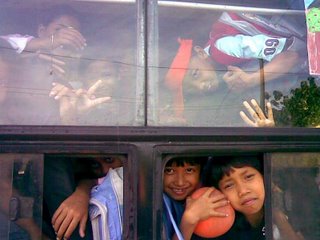
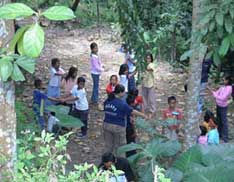
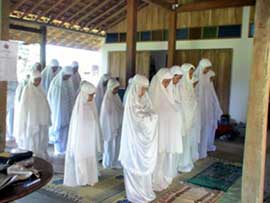
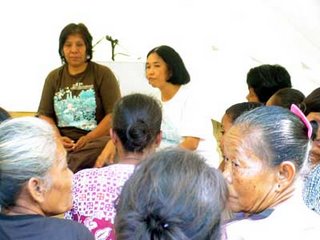 The first day, I had been assigned to "evacuation", that is the search and collection of the many corpses still remaining in the mud and the ruins. The following day, I had met Johny, an Indonesian Chinese from Kalimantan who had come with several voluntary friends, of which Francisca. In Mexico, Francisca had a bread and cake factory. In Aceh, she trained the women of one village to bake breads and cakes and set up with them a co-operative in their village managed by the women. She told me that she had worked for three weeks in several villages affected by the earthquake and had offered the same training to the women of these villages. I proposed to her to come to Bebekan to advise us on how to organize the women in the clothing industry and the marketing of "emping", the local chips made from the "melinjo" acorns.
The first day, I had been assigned to "evacuation", that is the search and collection of the many corpses still remaining in the mud and the ruins. The following day, I had met Johny, an Indonesian Chinese from Kalimantan who had come with several voluntary friends, of which Francisca. In Mexico, Francisca had a bread and cake factory. In Aceh, she trained the women of one village to bake breads and cakes and set up with them a co-operative in their village managed by the women. She told me that she had worked for three weeks in several villages affected by the earthquake and had offered the same training to the women of these villages. I proposed to her to come to Bebekan to advise us on how to organize the women in the clothing industry and the marketing of "emping", the local chips made from the "melinjo" acorns. 